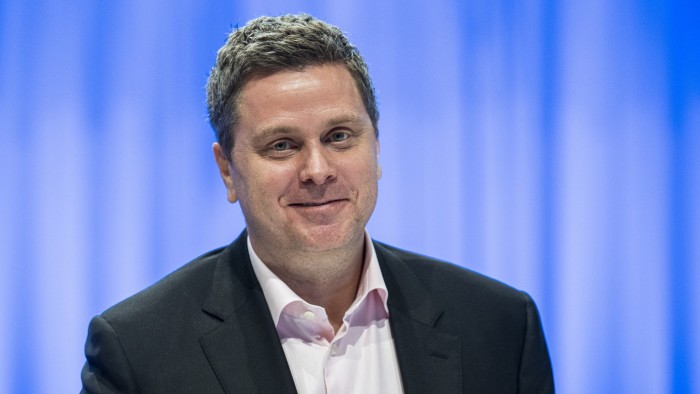Roche’s $50 Billion Bet on US Manufacturing and R&D: A Game-Changer for Pharma
In a landmark move, Swiss pharmaceutical giant Roche announced plans to invest $50 billion over the next decade to expand its US manufacturing footprint and accelerate research and development (R&D). The commitment—the largest single investment in the company’s 127-year history—aims to strengthen America’s biotech infrastructure while positioning Roche as a leader in next-generation therapies. The investment will create approximately 12,000 high-skilled jobs and fund cutting-edge facilities across five states starting in 2025.
Why the US Market? Strategic Drivers Behind Roche’s Mega-Investment
Roche’s decision reflects a calculated response to three critical industry shifts. First, the Inflation Reduction Act’s drug pricing provisions have made domestic manufacturing more financially attractive. Second, the pandemic exposed vulnerabilities in global supply chains, with 80% of active pharmaceutical ingredients (APIs) currently produced overseas. Third, the US accounts for 45% of Roche’s global revenue, making localization a strategic priority.
“This isn’t just about avoiding tariffs—it’s about being where the science happens,” explains Dr. Sarah Lin, a biotech analyst at Bernstein Research. “With 60% of the world’s clinical trials occurring in the US and the NIH funding $45 billion annually in medical research, Roche needs proximity to top talent and institutions.”
The breakdown of investments includes:
- $28 billion for new biologics manufacturing plants in North Carolina and Ohio
- $15 billion for AI-driven R&D hubs in Massachusetts and California
- $7 billion for workforce development programs with 30 universities
Job Creation and Economic Ripple Effects
Roche’s expansion promises significant economic benefits beyond direct hiring. A 2023 Brookings Institution study suggests every pharmaceutical job generates 4.2 additional jobs in supporting industries. The investment could therefore catalyze nearly 50,000 total positions—from construction workers building facilities to IT specialists maintaining diagnostic equipment.
“We’re not just investing in pipelines and plants, but in people,” says Roche CEO Thomas Schinecker. “Our apprenticeship programs will target underrepresented communities, with 40% of new training slots reserved for non-traditional candidates.”
However, some labor economists urge caution. “Pharma jobs require specialized skills that take years to develop,” notes MIT’s Professor David Autor. “Unless education partnerships deliver, we might see a mismatch between job openings and qualified applicants.”
How Roche’s Move Reshapes the Competitive Landscape
The $50 billion commitment intensifies pressure on rivals like Pfizer and Merck, which allocated $10-15 billion annually for capital expenditures in recent years. Industry analysts predict three likely outcomes:
- Accelerated consolidation: Mid-sized biotechs may seek mergers to compete with Roche’s scaled infrastructure
- Talent wars: Salaries for top researchers could spike 20-30% in hotspot regions like Boston and San Diego
- Supply chain rebalancing: More companies may reshore production to qualify for “Made in America” drug premiums
Innovation Implications: From Cancer to Alzheimer’s
Roche plans to direct 35% of its R&D budget—approximately $5.25 billion annually—toward neurology and oncology breakthroughs. This aligns with FDA data showing 68% of recent drug approvals target these therapeutic areas. The company’s Genentech unit will lead trials for:
- An anti-amyloid Alzheimer’s drug showing 27% slower cognitive decline in Phase II
- Personalized cancer vaccines using mRNA technology
- Novel depression treatments targeting neural plasticity
Yet some patient advocates worry about accessibility. “Massive R&D budgets often lead to blockbuster drugs with $500,000 price tags,” says Diana Martinez of Patients for Affordable Drugs. “We need guarantees that this investment translates to affordable therapies.”
The Road Ahead: Challenges and Opportunities
While Roche’s bold move sets a new industry benchmark, execution risks remain. The company must navigate:
- Regulatory hurdles for new facilities (average approval time: 18 months)
- Potential overcapacity if biologic drug demand plateaus
- Geopolitical tensions that could disrupt equipment imports
Conversely, success could redefine pharmaceutical economics. By colocating R&D and manufacturing, Roche aims to slash drug development timelines from 10 years to 6—a potential game-changer for patients awaiting treatments.
As the first concrete plants break ground in Q2 2025, all eyes will be on whether this $50 billion gamble pays off in scientific advances and shareholder returns. One thing is certain: The pharma industry will never be the same.
For executives analyzing how to respond to Roche’s strategy, McKinsey’s latest report “Pharma 2030: The Reshoring Revolution” offers actionable frameworks for competitive positioning.
See more Business Focus Insider Team

